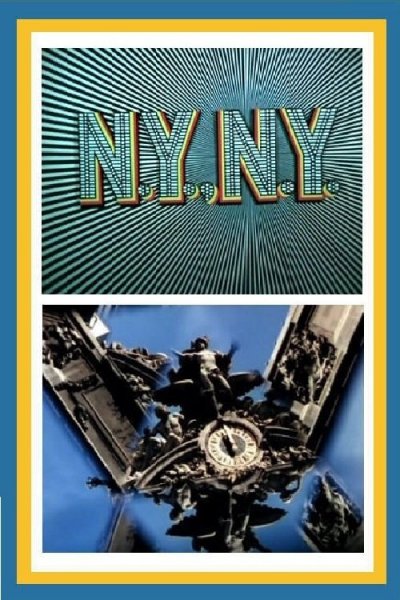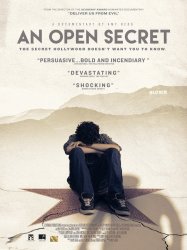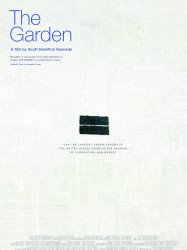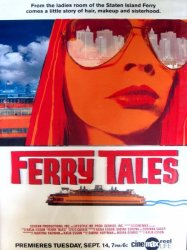N.Y., N.Y. is a american film of genre Documentary released in USA on 31 december 1957
N.Y., N.Y. (1957)

If you like this film, let us know!
- Infos
- Casting
- Technical infos
- Photos
- Videos
- Film quotes
- Characters
- Music
- Awards
N.Y., N.Y. is a 1957 film by director Francis Thompson. The film is a collection of scenes from New York City recorded through special kaleidoscope lenses (it is rumored that their development took over 20 years). Despite a similar name, it is unrelated to the 1977 film New York, New York.
N.Y., N.Y. is mentioned in Aldous Huxley's essay Heaven and Hell:
And then there is what may be called the Distorted Documentary a new form of visionary art, admirably exemplified by Mr. Francis Thompson’s film, NY, NY. In this very strange and beautiful picture we see the city of New York as it appears when photographed through multiplying prisms, or reflected in the backs of spoons, polished hub caps, spherical and parabolic mirrors. We still recognize houses, people, shop fronts, taxicabs, but recognize them as elements in one of those living geometries which are so characteristic of the visionary experience. The invention of this new cinematographic art seems to presage (thank heaven!) the supersession and early demise of non-representational painting. It used to be said by the non-representationalists that colored photography had reduced the old-fashioned portrait and the old-fashioned landscape to the rank of otiose absurdities. This, of course, is completely untrue. Colored photography merely records and preserves, in an easily reproducible form, the raw materials with which portraitists and landscape painters work. Used as Mr. Thompson has used it, colored cinematography does much more than merely record and preserve the raw materials of non-representational art; it actually turns out the finished product. Looking at NY, NY, I was amazed to see that virtually every pictorial device invented by the old masters of non-representational art and reproduced ad nauseam by the academicians and mannerists of the school, for the last forty years or more, makes its appearance, alive, glowing, intensely significant, in the sequences of Mr. Thompson’s film.
Comments
Leave comment :
Suggestions of similar film to N.Y., N.Y.
There are 8954 with the same cinematographic genres, 373 films with the same themes, to have finally 70 suggestions of similar films.If you liked N.Y., N.Y., you will probably like those similar films :

An Open Secret (2015)
Origin USA
Genres Documentary, Crime
Themes Films about children, Documentary films about business, Documentary films about the film industry, Documentary films about law, Documentary films about cities, Documentary films about child abuse, Films about child abuse
Actors Corey Feldman, Todd Bridges, Brock Pierce, Bryan Singer, Ben Savage, Macaulay Culkin
Rating72%





A feature documentary from Oscar-nominated director Amy Berg follows the stories of five former child actors whose lives were turned upside down by multiple predators, including the convicted sex offenders who owned and operated the now infamous Digital Entertainment Network (DEN).
 , 1h
, 1hOrigin United-kingdom
Genres Documentary
Themes Medical-themed films, Films about drugs, Documentary films about law, Documentary films about health care, Documentary films about cities, Films about psychiatry, Films about disabilities
Actors Louis Theroux
Rating72%






The Garden (2008)
, 1h20Origin USA
Genres Documentary
Themes Environmental films, Documentary films about business, Documentary films about environmental issues, Documentary films about cities
Actors Daryl Hannah, Danny Glover, Miguel Pérez, Martin Sheen
Rating72%





Le film raconte l'histoire de South Central Farm , une ferme jardin communautaire située en milieu urbain à Los Angeles. Le propriétaire du terrain décide de le raser et envoie les bulldozers.
 , 1h
, 1hOrigin United-kingdom
Genres Documentary
Themes Films set in Africa, Documentary films about cities
Actors Louis Theroux
Rating70%





 , 1h
, 1hOrigin United-kingdom
Genres Documentary
Themes Documentary films about cities
Actors Louis Theroux

The Four Year Plan (2011)
Origin United-kingdom
Genres Documentary
Themes Sports films, Documentary films about sports, Association football films, Documentary films about cities
Rating73%





 , 1h
, 1hOrigin United-kingdom
Genres Documentary
Themes Documentary films about cities
Actors Louis Theroux
Rating73%






Tally Brown, New York (1979)
, 1h37Directed by Rosa von Praunheim
Genres Documentary
Themes Films about music and musicians, Films about sexuality, Films about television, LGBT-related films, Documentary films about business, Documentary films about the film industry, Documentary films about music and musicians, Documentary films about cities, LGBT-related films, LGBT-related film
Actors Holly Woodlawn, Divine, Taylor Mead, Magdalena Montezuma, Rosa von Praunheim, Andy Warhol
Rating70%






Nothing But Time (1926)
, 47minutesDirected by Alberto Cavalcanti
Origin France
Genres Drama, Documentary
Themes Documentary films about cities
Actors Philippe Hériat, Blanche Bernis, Clifford McLaglen
Rating70%





Le film montre la vie de Paris dans une journée en 47 minutes.

Ferry Tales (2003)
, 40minutesOrigin USA
Genres Documentary
Themes Documentaire sur une personnalité, Documentary films about cities
Rating73%





 Connection
Connection